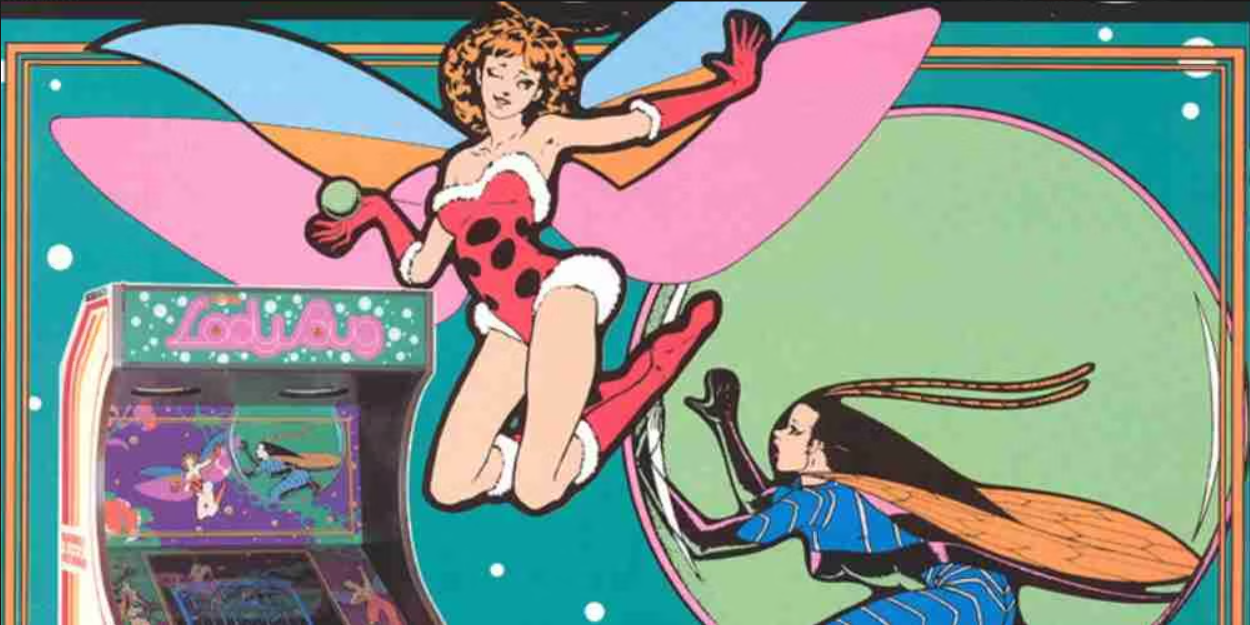From Princesses to Power Armour - The History of Female Representation in Games
/If I were to ask you to think of a female video game character, what would be the first to come to mind? A lot of people would probably name the likes of Lara Croft, Samus Aran, or Princess Zelda.
Now think about who you picked. What kind of character are they? How are they depicted? Do they challenge stereotypes or reinforce them? Maybe the answer to those questions have changed throughout the character’s history. Let’s look at how depictions of female characters in video games have changed over time.
We have to go all the way back to the early 80s to meet the first playable female character in gaming. If you guessed Ms. Pac-Man was first, you’re very close! It was actually the titular star of a game called Ladybug, which was a Pac-Man knock-off released in 1981, whereas Ms. Pac-Man was released in 1982. Both games featured artwork on the sides of their arcade machines depicting their protagonists posing like old pin-up models, seen below.
art from Game Ms Pac-man // Courtesy of arcade-museum.com
Art from game Ladybug // courtesy of Screenrant.com
Bizarre as it may be to sexualize a hungry yellow circle, the artwork kicked off a trend of objectifying female characters that persists to this day. Despite that, it was undeniably significant to feature playable female characters for the first time, and it’s worth noting that Ms. Pac-Man was created out of appreciation for the large number of female gamers who helped make Pac-Man a huge success, not to attract women to the arcade.
Samus revealed // courtesy of thepopculturestudio.com
More female leads began to appear in the years that followed, though male protagonists still dominated screens. The number of leading ladies was still scant enough that it came as a shock when space-faring bounty hunter Samus Aran removed her helmet at the end of Metroid in 1986 and revealed she was a woman.
For the most part, female characters at that time were more akin to objectives than actual characters. Princess Peach from the Super Mario series and Princess Zelda from The Legend of Zelda franchise fulfilled the damsel in distress stereotype and needed to be rescued by the male heroes (and often still do today), and this trope would be repeated far too often throughout the industry.
An older version of lara croft vs. her modern design // courtest of aminoapps.com
Sexualized female characters have also been a persistent trend. A study of female video game characters spanning from 1983 to 2014 found that sexualization peaked in the mid-90s but has diminished since then. Perhaps its unsurprising then that Tomb Raider debuted around the same time as the peak.
Its protagonist, Lara Croft, is one of gaming’s most iconic heroines. She’s capable and badass, but also oversexualized, further reinforcing an already unrealistic standard of beauty. The trend continued, especially in male-dominated genres like fighting games, with series like Soul Calibur and Dead or Alive leaning particularly hard into hyper-sexualization (the latter series even produced an infamous beach volleyball spinoff).
Ellie in the last of us part 1 // courtesy of pcgamesn.com
Thankfully, in the modern era of gaming things have been trending away from stereotypes. Female characters now often aren’t just damsels, or sexy, or one-note badasses. Increasingly, effort has been made to make them interesting, thoughtfully-written characters first and foremost, such as Ellie in The Last of Us or Edelgard in Fire Emblem: Three Houses. Even Lara Croft has gotten a more realistic makeover in recent years, and greater care has been taken to make her personality more relatable and human.
There’s been some pushback against these modern trends. While developers strive to make characters more realistic, some gamers have complained that female characters are becoming too ugly. A lot of that is coming from men, and it’s kind of a gross take.
There are also women, however, who have noted a trend of “strong” female characters being depicted as women who exclusively exhibit traditionally masculine traits. There’s obviously space for this kind of character – people are diverse and nuanced after all – but these commentators argue that this shouldn’t become the only depiction of what a strong woman can be. A character can be strong and feminine at the same time. A character being attractive is fine too; the important thing is not to oversexualize.
Above all else, characters, female or otherwise, are most interesting when they’re written well. In that regard, I think the industry is moving in a positive direction.
Chris Hodgins is an aspiring writer and avid gamer, which is probably obvious enough from his involvement in this blog. He’s also a cat whisperer with wild dreams of opening a cat sanctuary someday, if he ever manages to strike it rich. Until then, he spends his time gaming, writing, and sharing his life with his lovely wife and three furry kids.








